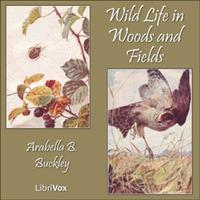NUTS AND NUT-EATERS
WE pass through a small nut-wood on our way to school. In the winter, when there are no leaves on the trees, we see the grey clusters which we call "lambs-tails" hanging on the nut-bushes, Paul says their real name is "catkins." We often look at them to see how they grow. At first they are only like little grey buds on the branch. Then they grow larger and hang down. By degrees they become very loose, like tassels, and under the grey scales come some little bags of yellow dust.
Then in March, still before the leaves are on the trees, the wind shakes the tree and blows the yellow dust about.
By this time we find small flowers, growing near the end of the branches. You have to look well to find them. But they are very pretty. Each flower has two tiny red horns, and there are many flowers in one green cup.
We know that these red flowers grow into nuts, for we find the nuts just in that place in September. When the wind blows the yellow dust out of the lambs-tails, some of it falls on the red horns of the flowers, and this makes the nut grow.
In the autumn we look out well to see when the nuts are ripe. We want to get some before the Squirrels, and the little birds called Nuthatches, carry them all away.
Peggy is in such a hurry that she picks them sometimes before they are ripe. This is foolish, for then there is only a very small watery kernel inside. The rest of the shell is filled with white soft stuff.
Paul says this white stuff is the food which the nut uses to make itself large and firm. When the nuts are ripe they drop quite easily out of the brown leafy cup in which they sit.
Sometimes when we pick the nuts we find one with a little hole in the shell. Then we know that the nut is a bad one, and we shall most likely find a maggot inside.
It is so curious! Paul tells us that this maggot is a young beetle. It does not look like one. But many beetles when they are young have no legs and are only grubs.
This nut-beetle is called a Weevil. When the nut is quite young and soft, the mother weevil comes and lays an egg in it. She is a very small beetle and has a long snout. With her snout she makes a hole in the soft green nutshell, and then lays a tiny egg in the hole. By-and-by the egg hatches into a maggot. It grows fat by feeding on the nut. So when we gather it, the nut is half eaten, and the maggot is curled up inside.
If we had not picked the nut, the maggot would have eaten a large hole in the nutshell with its horny mouth, and then have crept out of its maggot skin as a little weevil with wings.
So the yellow dust and the red flowers make nuts. Some of these nuts we get. Some the squirrels get. Some the nuthatch gets. Some fall to the ground and grow up into young nut trees, and some the weevil grub gets, before they are ripe.

